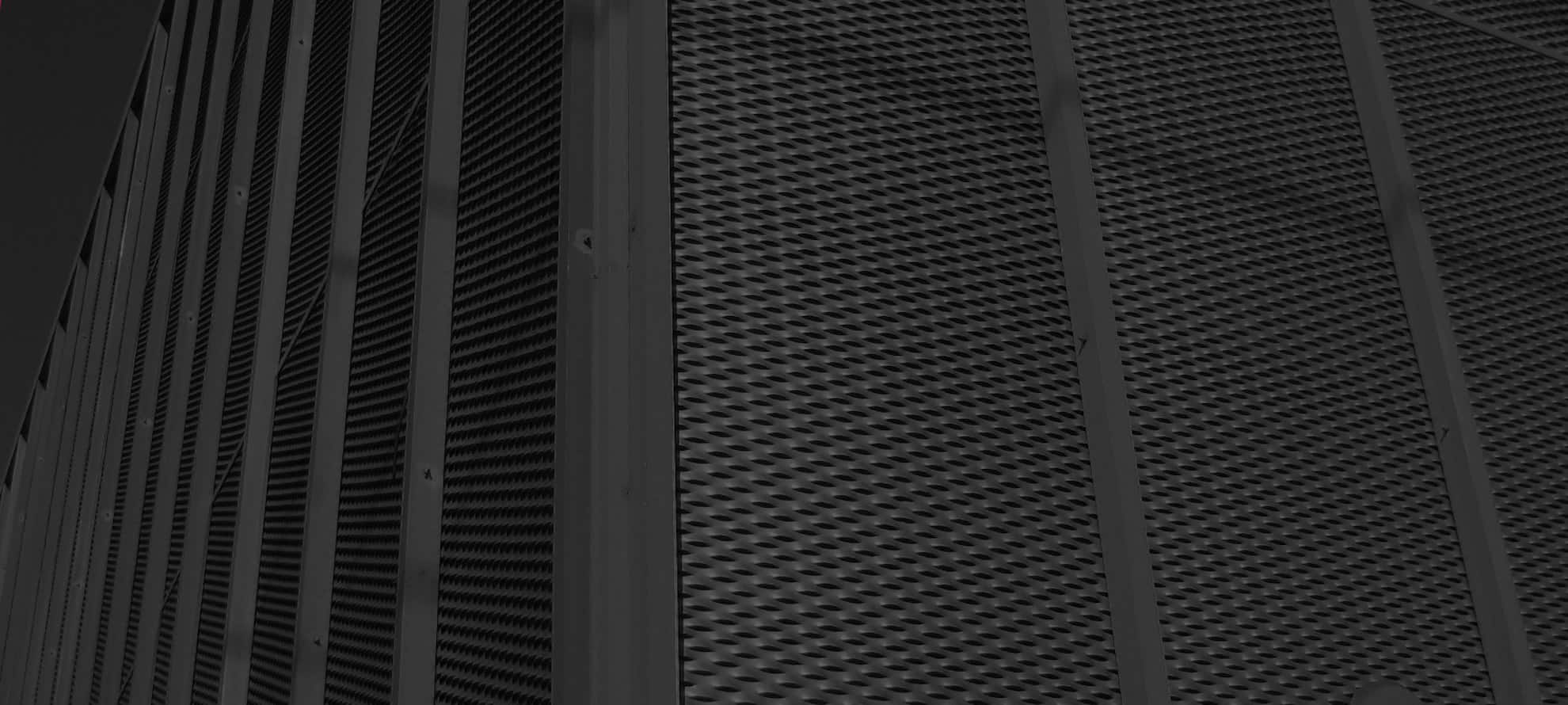
Process
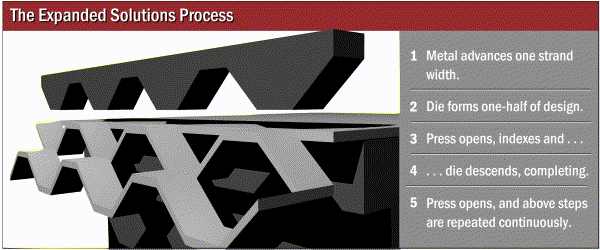

Metal Advances one strand width.
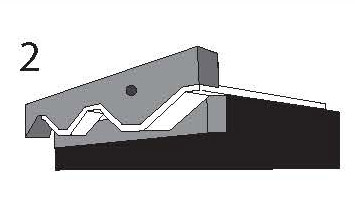
Die forms one-half of design.
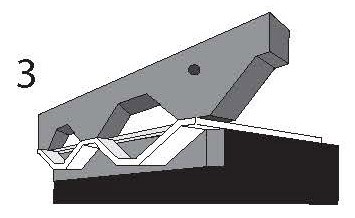
Press opens, indexes, (slides over half diamond) and . . .
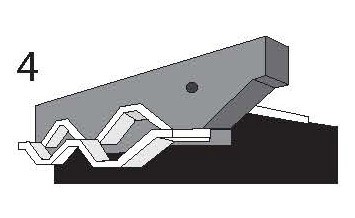
. . . die descends, completing.
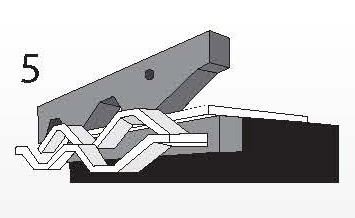
Press opens, and above steps are repeated continuously.
Terminology

Bond
The solid intersection of two strands
SWD
Nominal dimension, Short Way of Diamond
LWD
Nominal dimension, Long Way of Diamond
Design Size
Actual dimension SWD and LWD. Measured form a point to a corresponding point on the adjacent diamond
SWO
Short Way of Opening
LWO
Long Way of Opening
Strands
The sides of the expanded metal design
Strand Thickness
Thickness of the base metal
Strand Width
Amount of material fed under dies to produce one strand
Diamonds
Open area of metal after expanding
Edge Configuration
Condition of edge of an expanded metal sheet. Usually refers to “open” (random) or “closed” (bonded) diamond edges produced from shearing
Flattened
(abbreviated F) Expanded metal that has been cold-rolled after expansion to provide a smooth, flat and level sheet. The flattening process reduces the original thickness of the base metal
Grating
Expanded metal that is produced from heavier plate, usually low-carbon steel, with larger diamonds. It is typically used for walkways and platforms
Machine Run
Stock size pieces as manufactured (without being sheared to size)
Meshes
A term used to describe special expanded metal products
Shearing
Cutting expanded metal to produce various sizes and shapes (The standard is “random shearing”. If the buyer desires “bond shearing” that must be specified at order entry)
Standard
(abbreviated S) (Same as “Regular” or “Raised”) Expanded metal as it comes from the press. The strands and bonds are set at a uniform angle to the plane of the sheet. This gives added strength and rigidity, as well as skid-resistant surface
Style Designation Format
A combination of numbers, letters and abbreviations in a standard format permitting proper specification of dimension, thickness, style and weight of most commonly used expanded metal products (e.g. 3/4 #9, or 4.0 lb.)
Typical Tolerances
Consult our Sales Team for additional information on product and it’s applications.

Stock Size or Machine Run Sheets:
SWD
- Shall not vary greater than -0″ +1/4″ per foot of width (i.e. 48″ could be 49″)
LWD
- Shall not vary greater than -0″ + 1/4″ per foot of length (i.e. 96″ could be 98″)
Random Sheared
- Expanded metal +/- 1/8″ (open diamonds 4 sides)
- Grating +/- 1/4″
- Small Mesh +/- 1/16″
